SCHRADER WW II
U.S. NAVY
MK V DIVING HELMET
1943
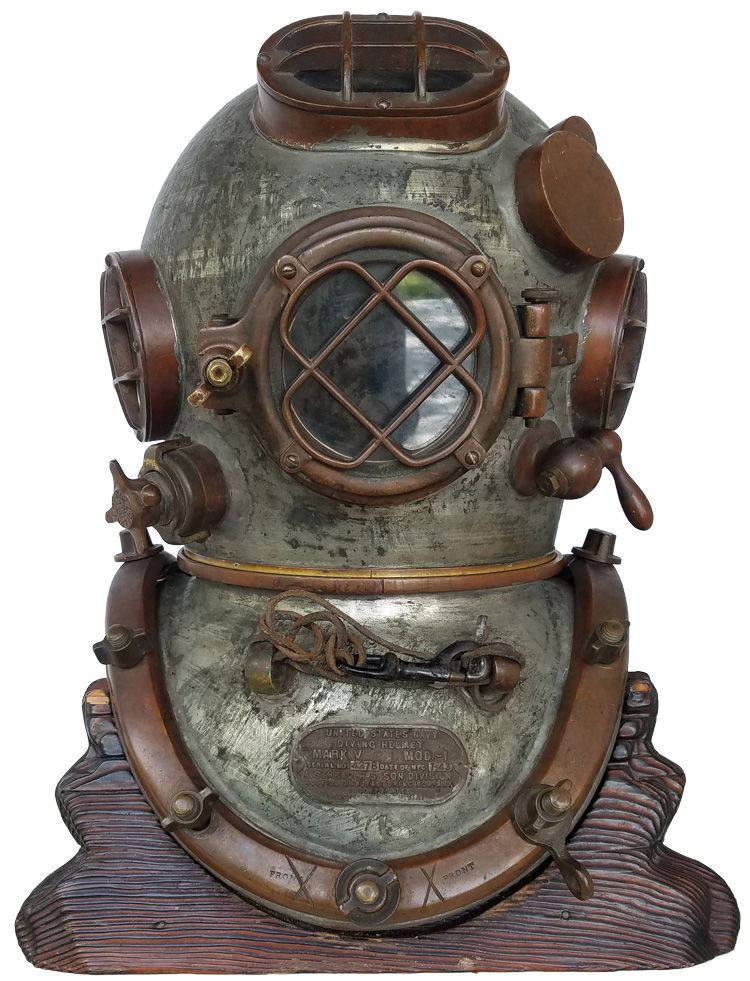 Schrader was one of the original maker’s of Navy MK V Dive Helmets
Schrader was one of the original maker’s of Navy MK V Dive Helmets
during WW II
TOTAL WEIGHT:
55 lbs BONNET: 31 lbs BREAST PLATE: 22 lbs
SERIAL NUMBER: 427 B (Breast Plate Label) 456 (Bonnet)
DATE: 7 – 43
STAND NOT INCLUDED
Presented
is a fine 12 bolt, 4 light U.S. Navy MK V dive helmet made by Schrader in 1943. HELMET
MARKINGS: Authentic 12 bolt, 4 light Schrader Navy MK V dated July 1943 with serial number 427B on the maker’s tag. The number on the bonnet is neck ring is 456, and the number on the rails is 427. There is the Navy Inspectors mark of a “U anchor S” on the top of the speaker housing’s knuckle.
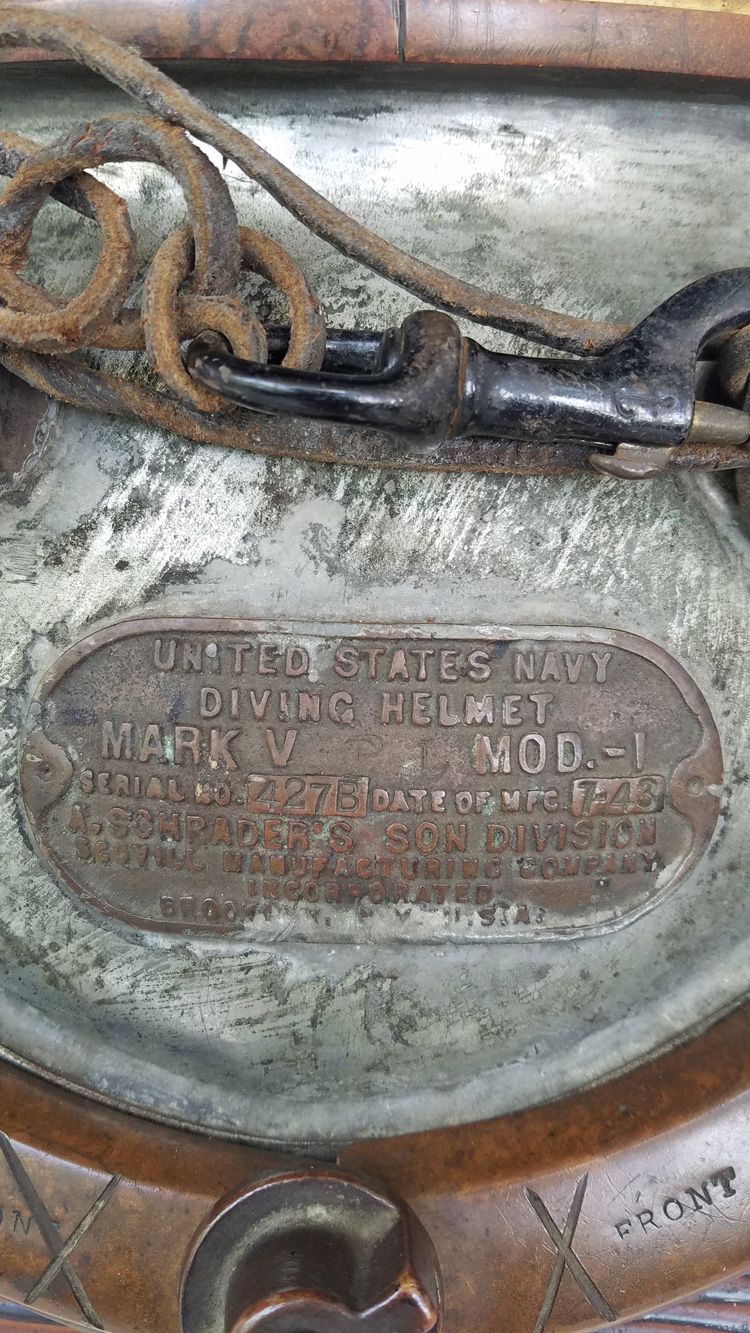 Schrader’s Tag
Schrader’s Tag
CONDITION:
The helmet appears to be in excellent and close to original condition with its tinning fully intact. There are no dents and very few marks or abrasions. The air vents are all intact. The right side chin relief valve, spit cock handle, front door wing nut, all turn easily. The speaker housing has its interior piece attached. A check valve is fitted, and the comm elbow has a nut. Like all used diving gear, this is being sold for DISPLAY ONLY. It should not be dived without having passed inspection by a certified dive shop.
History of Owner – John (Jan) B Burba: Johns family came to the US via Sweden, France, Venezuela, eventually immigrating to the US in 1946 to Rochester, NY. He trained as a plumber/pipefitter after school, and enlisted in the Army in 1961. He was an avid enthusiast of water sports with both scuba and exploration activities, owning a mini sub at one point. In the late 60s, while in the San Francisco area, he enrolled in a Commercial Deep Sea Diving class, and became acquainted with a diver working on the Bay Area Rapid Transit system, and purchased this Schrader MK V from him. Subsequently, he used the MK V on underwater salvage in the west coast, and after returning to the New York area, on jobs on Lake Ontario and the New York City area. He switched to a more contemporary helmet while working on the Shoreham nuclear power plant where he was employed as an underwater welder. He was also involved in many aviation areas, as an Airframe & Powerplant mechanic, and with ratings in both fixed wing and helicopters. He delivered Hughs helicopters all over both North and South America. John passed away in 2018 after a very full and exciting life.
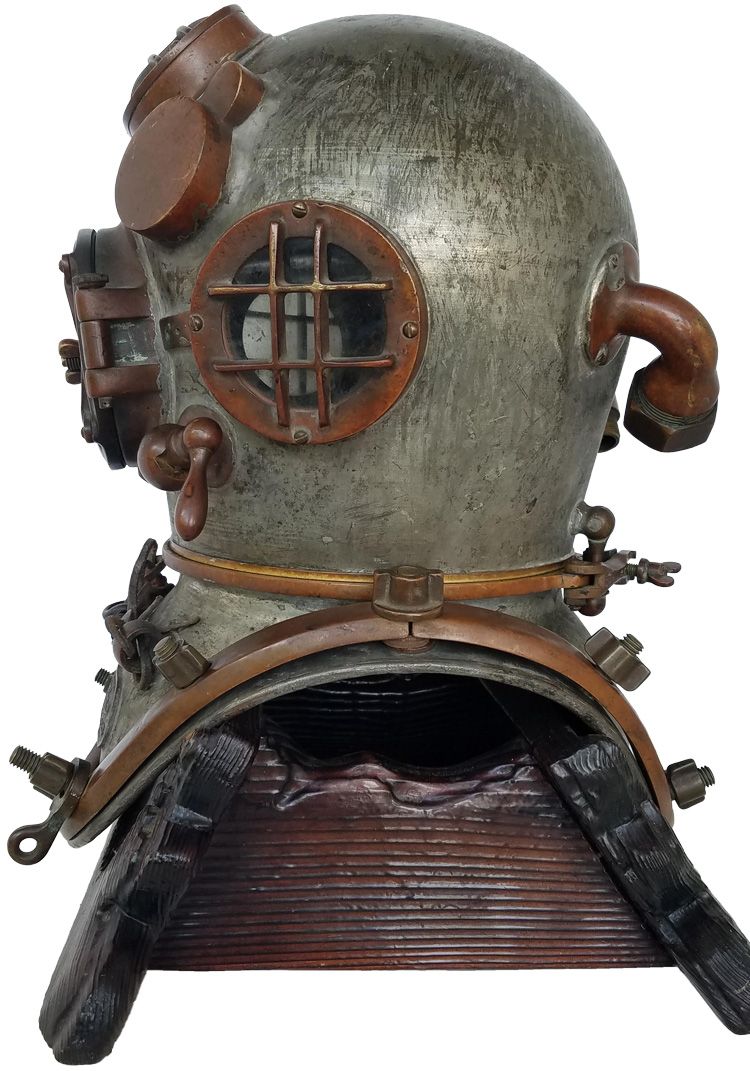 |
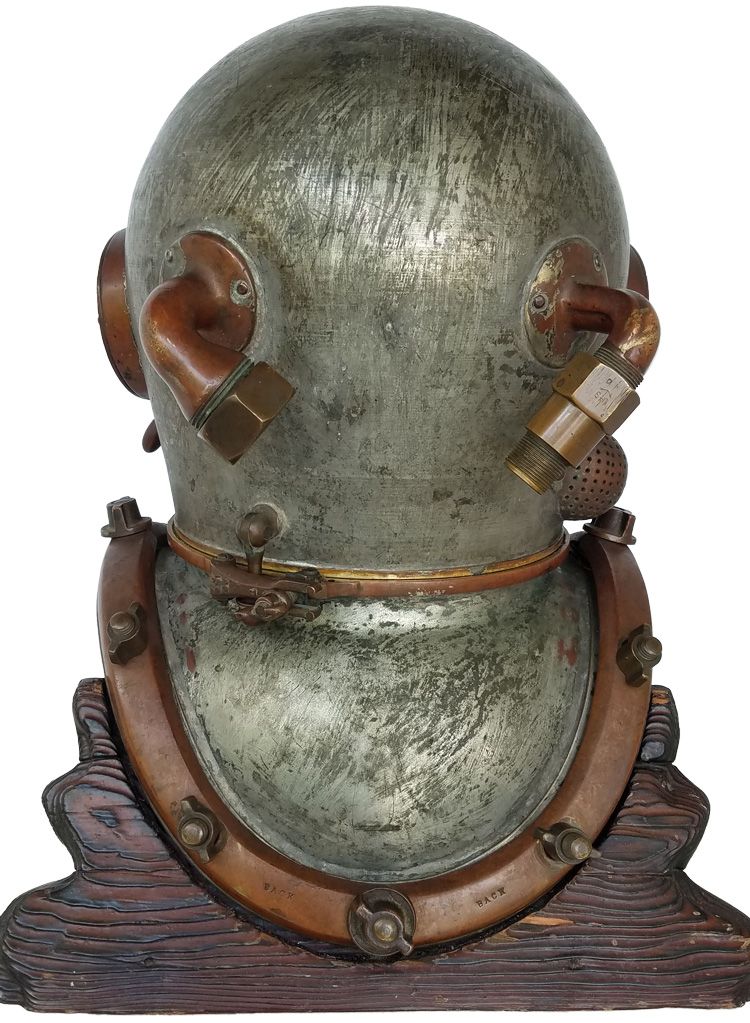 |
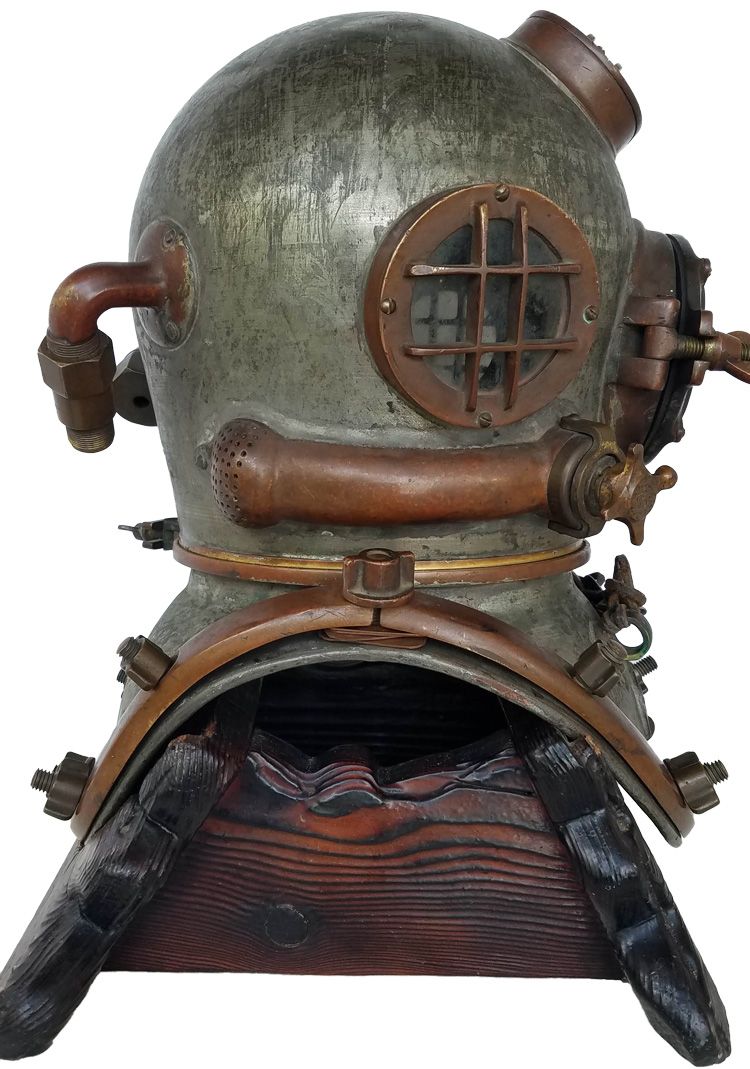 |
The stand is NOT INCLUDED!
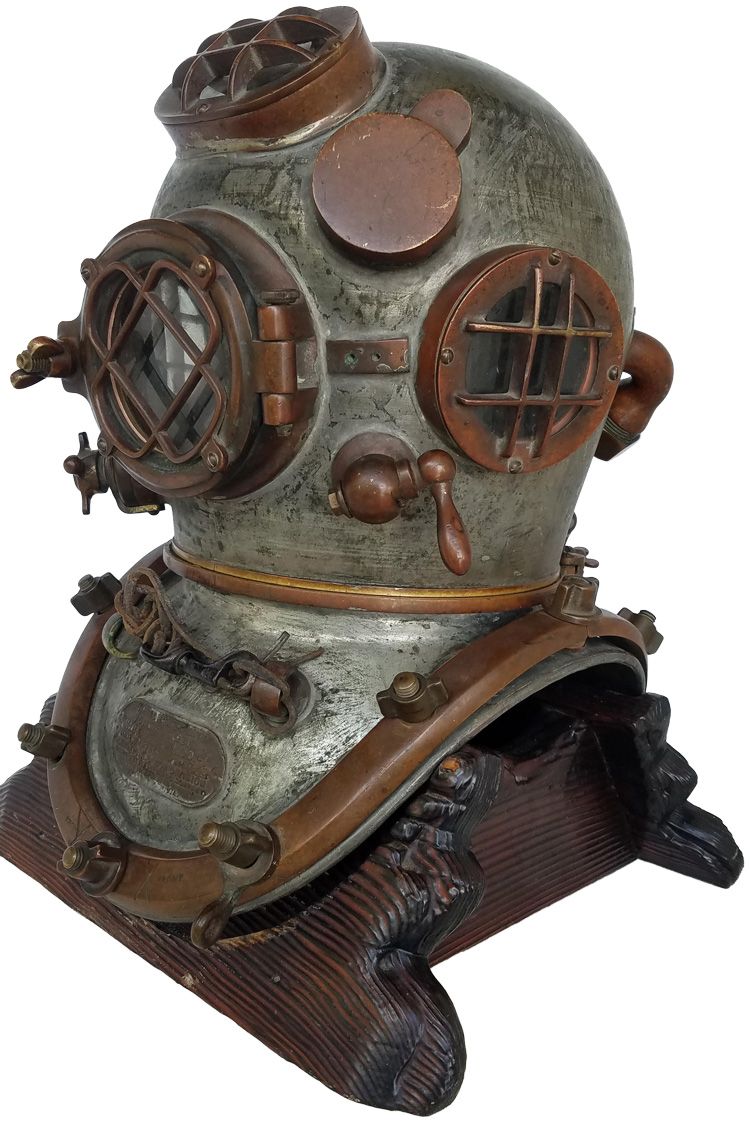 |
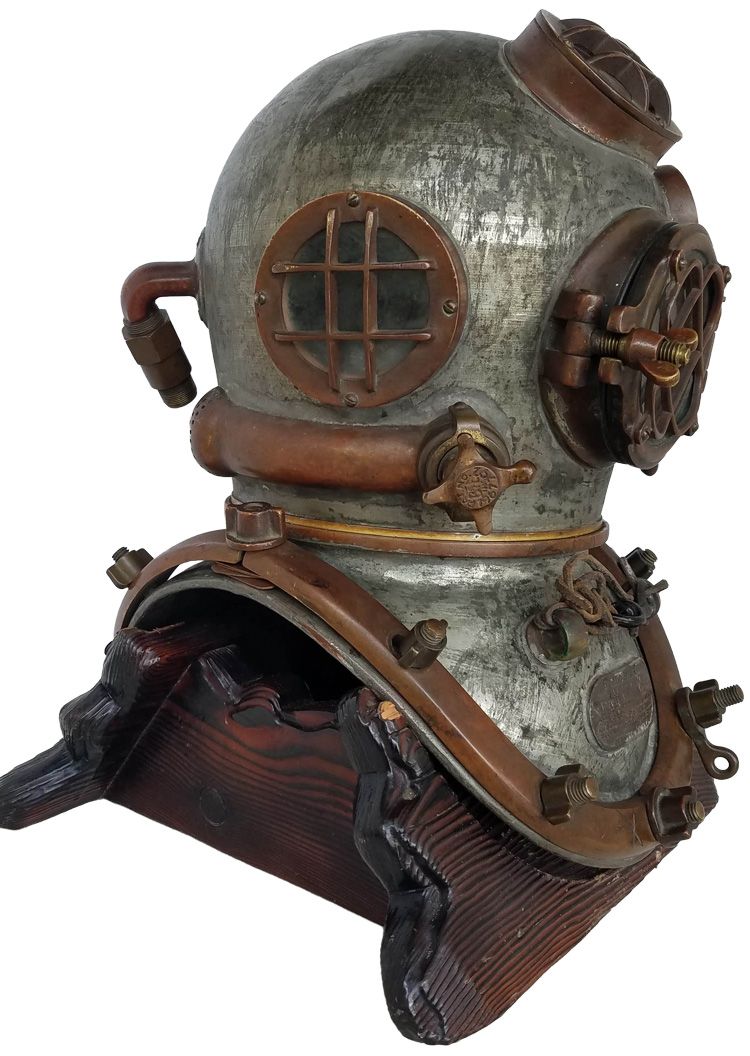 |
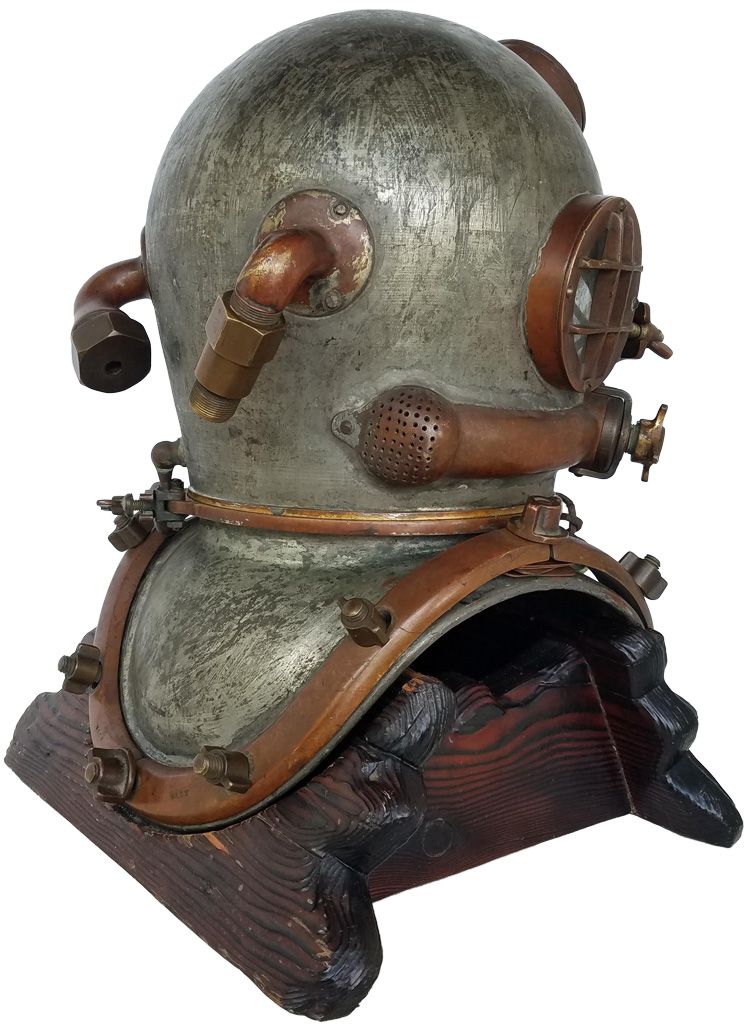 |
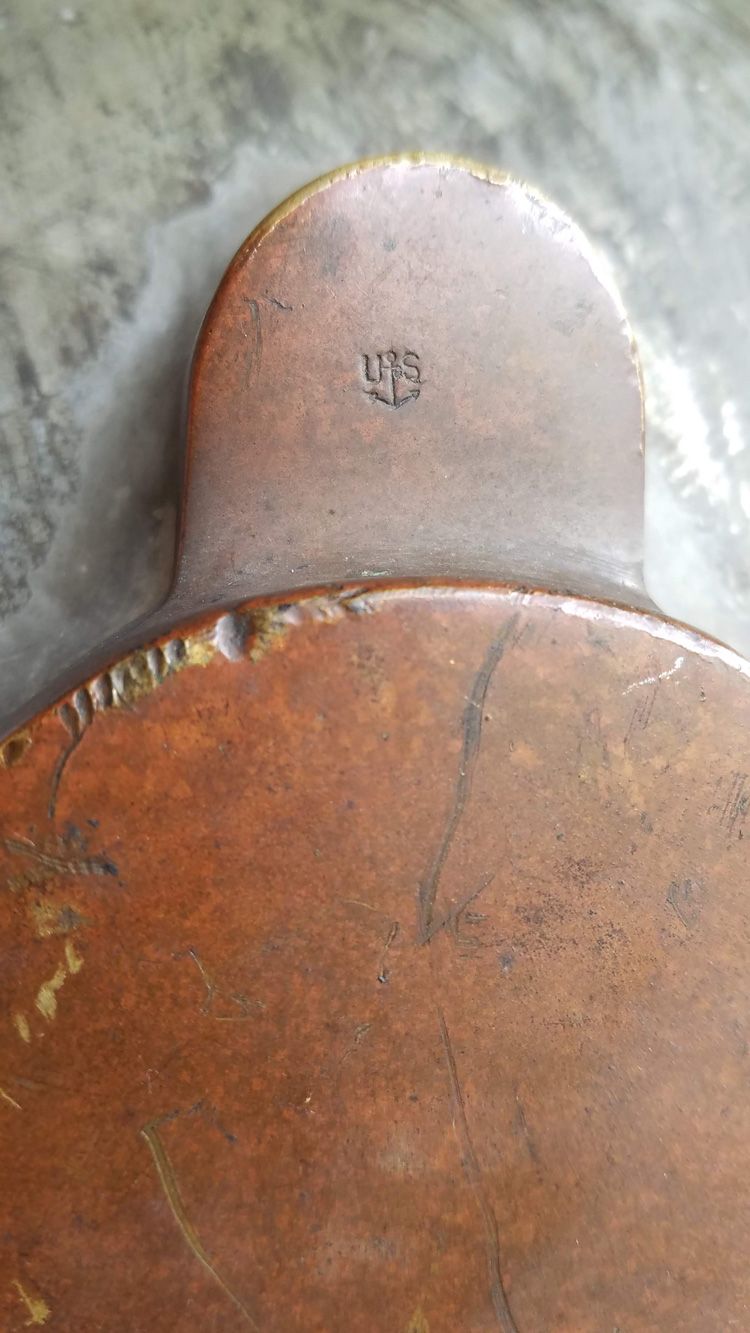 |
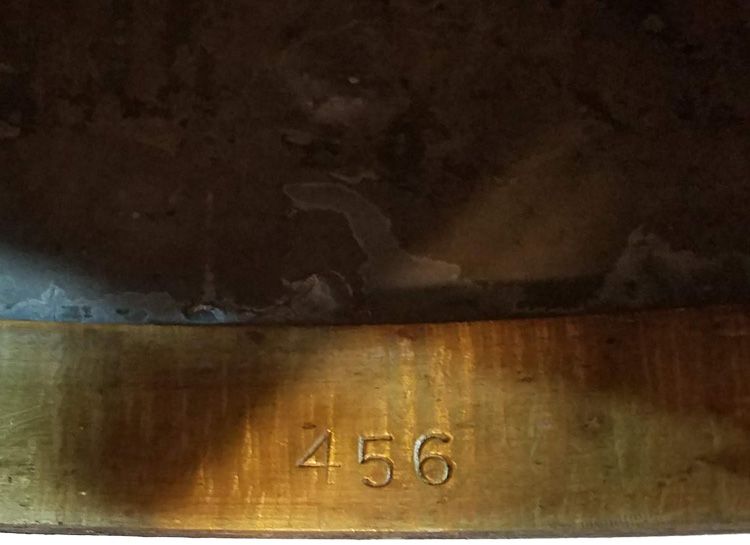 |
Navy Inspector’s Mark Number on Bonnet Neck Ring
Navy Inspector’s Mark
Number on Bonnet Neck Ring
Like all used diving gear, this is being sold for DISPLAY ONLY.
It should not be dived without having passed inspection by a certified dive shop.
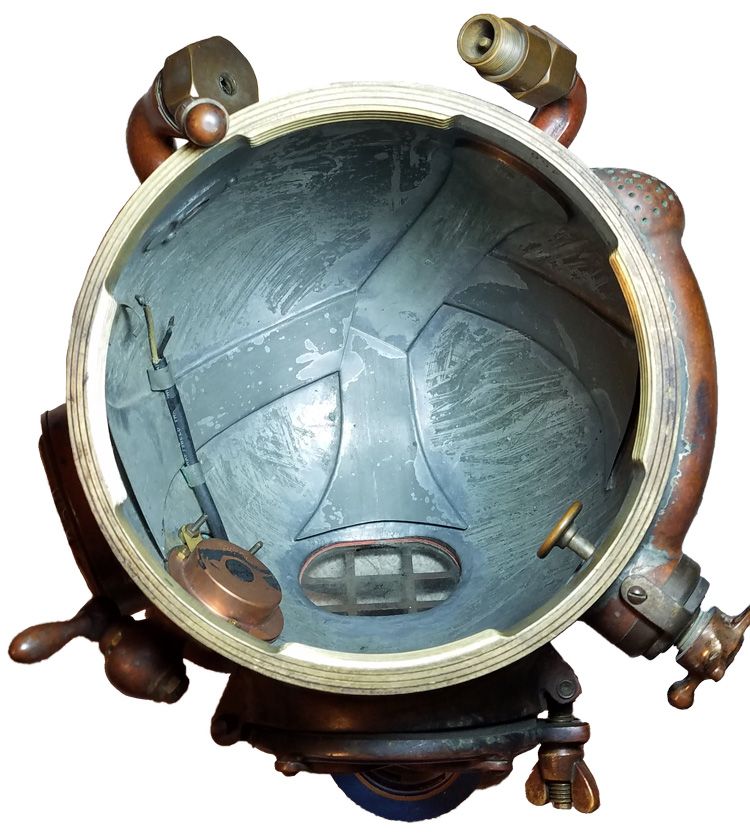 Inside of bonnet
Inside of bonnet
HISTORYOF SCHRADER DIVING: Schrader is one of the oldest names in U.S. diving, second only to Morse. The founder, August Schrader, was a creative and inventive German immigrant who originally set up a shop dealing in rubber products in New York City, NY in 1839, only a few years after A.J. Morse set up shop in Boston. In 1845 he began supplying fittings and valves for rubber products made by the Goodyear Brothers. Schrader was also a maker of daguerreotype apparatus. His original shop was at 115 John Street in Manhattan, NY . Shortly thereafter he went into partnership with Christian Baecher. Christian was a brass turner and finisher which provided a foundation for what followed. The two partners, having watched divers at work at a nearby New York Harbor jetty, decided to improve the diving helmets in use at the time. In 1849, with the help of Baecher, he created a new copper helmet. Later his interest in diving led to him to design an air pump. Around 1890, August Schrader saw the need for a bicycle tire valve. By 1891, he produced the Schrader valve. The Schrader valve was his most popular invention, and is still used today. In 1917, the United States Bureau of Construction & Repair introduced the MK V helmet and dress, which then became the standard for US Navy diving until the introduction of the MK 12 in the late nineteen seventies. Schrader and Morse Diving were the two original suppliers. During the onslaught of World War Two only Morse and Schrader were making dive helmets for the navy. DESCO and Miller-Dunn went into production around 1943. In total only about 7,000 MK V helmets were produced by all four companies during the war years with DESCO producing the most, then Morse, Schrader and Miller-Dunn. The scarcity of the latter two are the reason they command a higher price in the market. Undertaken during World War II. The MK V Diving Helmet was the standard U.S. Navy diving equipment until succeeded by the MK 12 Surface-Supplied Diving BRIEF HISTORY of NAVY MK V DEEP SEA DIVING DRESS: By 1915, the Bureau of Construction and Repair had designed the MK V Diving Helmet which seemed to address many of the problems encountered in diving. This deep-sea outfit was designed for extensive, rugged diving work and provided the diver maximum physical protection and some maneuverability. The 1915 MK V Diving Helmet had an elbow inlet with a safety valve that allowed air to enter the helmet, but not to escape back up the umbilical if the air supply were interrupted. Air was expelled from the helmet through an exhaust valve on the right side, below the port. The exhaust valve was vented toward the rear of the helmet to prevent escaping bubbles from interfering with the divers field of vision. By 1916, several improvements had been made to the helmet, including a rudimentary communications system via a telephone cable and a regulating valve operated by an interior push button. The regulating valve allowed some control of the atmospheric pressure. A supplementary relief valve, known as the spitcock, was added to the left side of the helmet. A safety catch was also incorporated to keep the helmet attached to the breast plate. The exhaust valve and the communications system were improved by 1927, and the weight of the helmet was decreased to be more comfortable for the diver. After 1927, the MK V changed very little. It remained basically the same helmet used in salvage operations of the USS S-51 and USS S-4 in the mid-1920s. With its associated deep-sea dress and umbilical, the MK V was used for all submarine rescue and salvage work undertaken in peacetime and practically all salvage work helmets in February 1980, which in turn was replaced by the MK 21 in December 1993.
